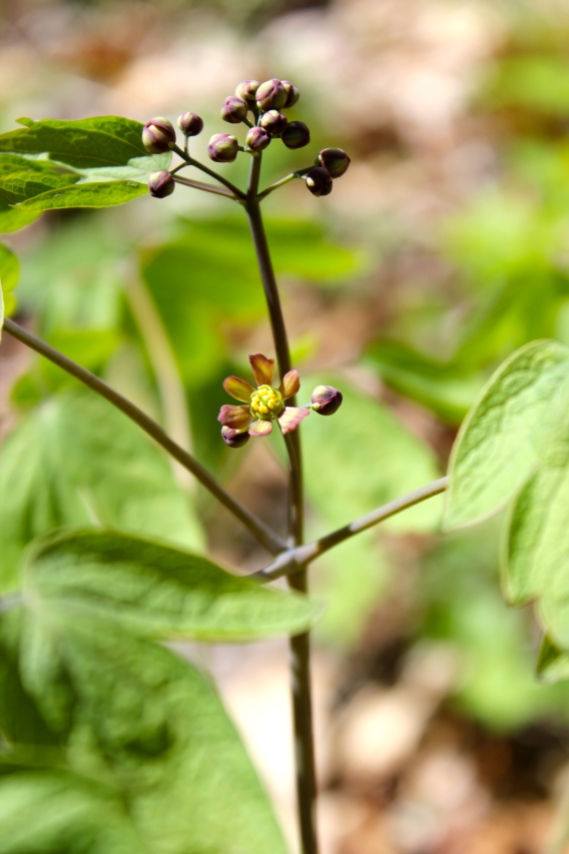
Caulophyllum thalictroides
Coming up now in rich hardwood coves is a historically important medicinal plant called blue cohosh. The flowers of this herb are small and inconspicuous, but the profusion of delicate blue-green leaves (for which the plant is named) make up for the lack of showy flowers.

Blue cohosh is a tall perennial—growing 2 to 3 feet in height–and bears a single compound leaf and a fruiting stalk. The leaf is branched into three parts and each part is again divided into threes. The leaflets that make up this compound leaf are roughly tulip-shaped.
The small yellow-green to purple-green flowers appear on a separate fruiting stalk in April and May. They are borne in a loose panicle of 1 to 5 flowers (see the photo gallery below). Each flower has 6 “petals” (they are really sepals). Later in the season, poisonous, dark blue berries will replace the flowers.
Blue cohosh root, also known as squaw root and papoose root, was used by Native Americans and later by colonists for treating a variety of feminine conditions, including inducing labor in childbirth, inducing abortion, starting menstruation, and also as a contraceptive. Be aware that there is also a plant called Black Cohosh, that had similar “old timey” medicinal uses.
The images below were captured at the Mill Creek Nature Preserve property in April 2014. Click on any photo to open the slideshow.














One Comment Add yours